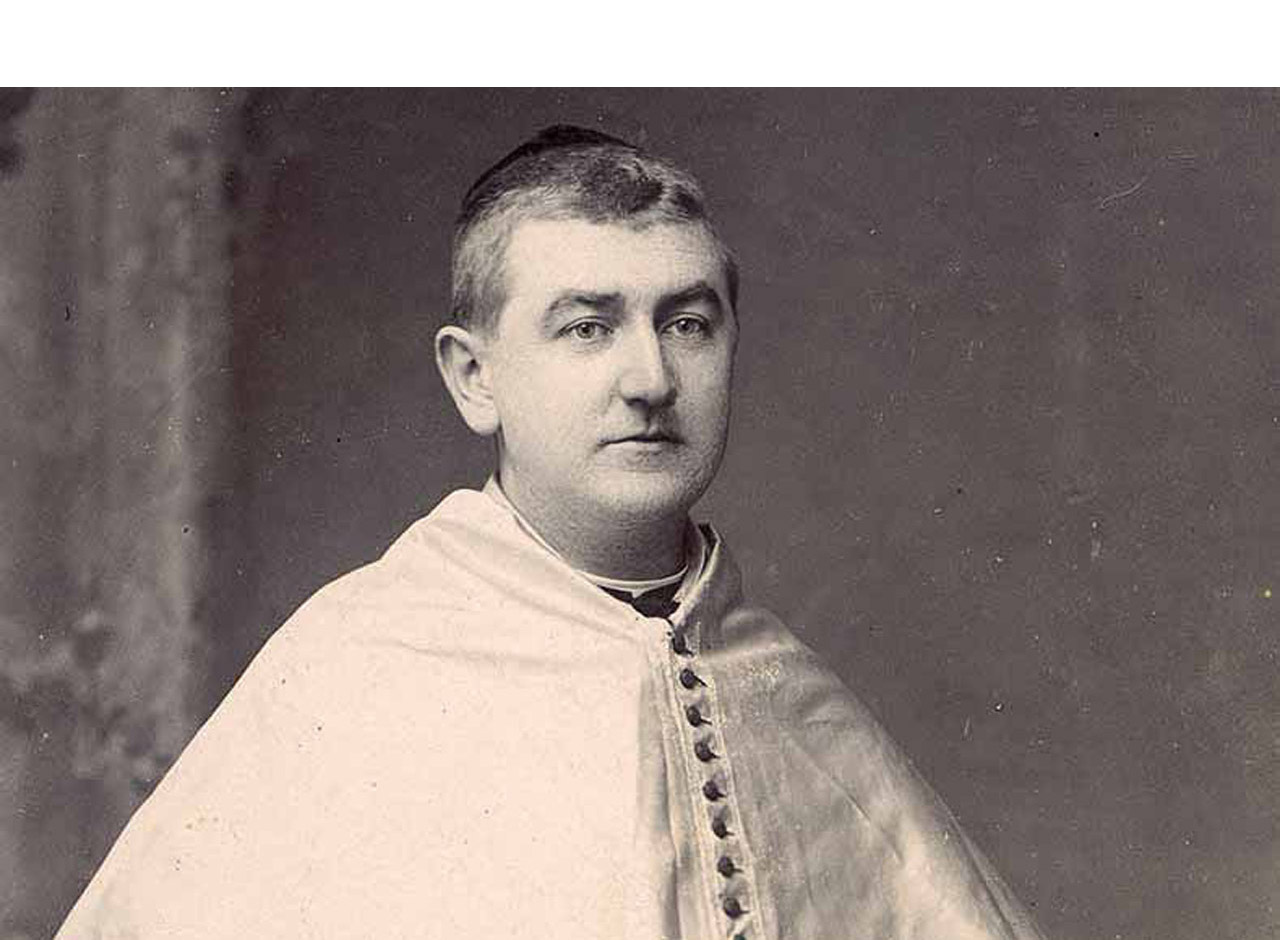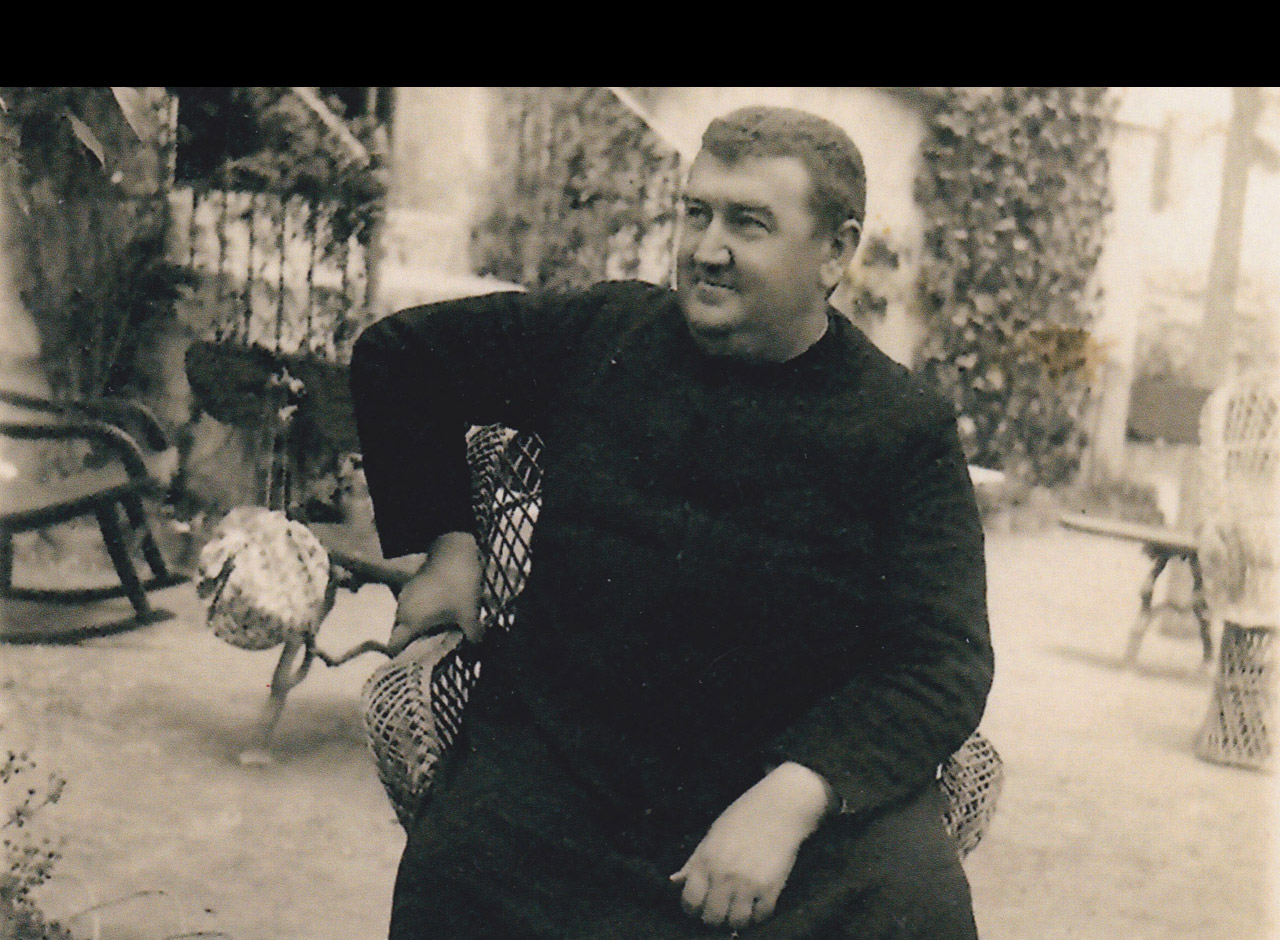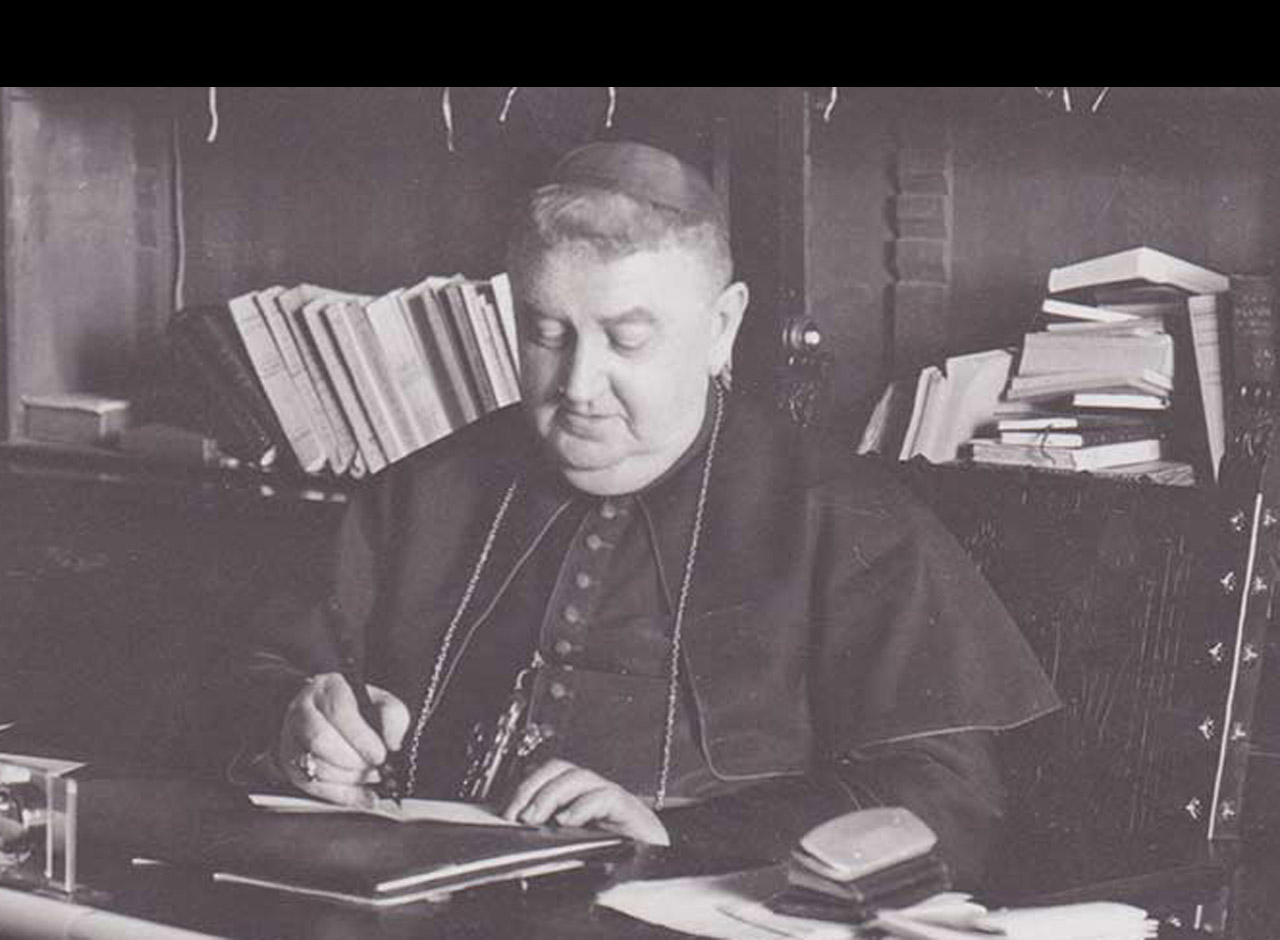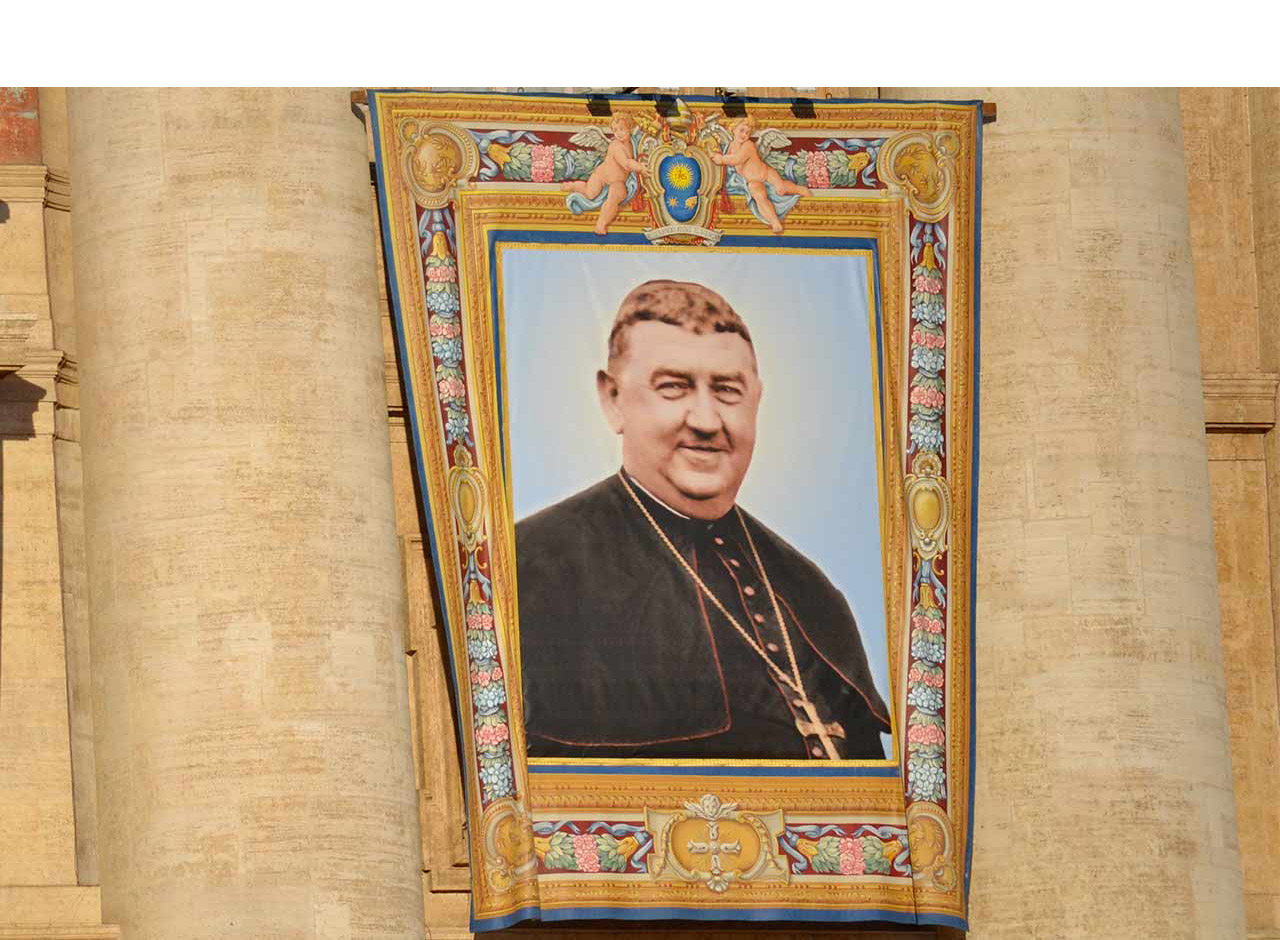
Childhood and youth in Seville (1877-1905)
Manuel González García, Bishop of Málaga and Palencia, was a significant and relevant figure in the Spanish Church during the first half of the 20th century.
The fourth of five siblings, he was born in Seville on February 25, 1877, into a humble and deeply religious family. His father, Martín González Lara, was a carpenter, while his mother Antonia took care of the home. In this environment, Manuel grew up serenely and with illusions, which he could not always see come true. However, there was one that he did achieve, and that would leave a mark on his heart: being part of the famous "six" of Seville Cathedral, a group of choir boys who danced on the solemnities of Corpus Christi and the Immaculate Conception. Already then his love for the Eucharist and for the Most Holy Mary were consolidated.
His family's Christian experience and the good example of priests led him to discover his vocation. Without prior notice to his parents, he took the seminary entrance exam. They welcomed this surprise of their son with acceptance of God's ways. Manuel, aware of the economic situation at home, paid for his stay during his formative years by working as a servant.
First mission
Finally, the long-awaited September 21, 1901 arrived, the date on which he received priestly ordination from the hands of Blessed Cardinal Marcelo Spinola. In 1902 he was sent to give a mission in Palomares del Río, a town where God marked him with the grace that would determine his priestly life. He himself describes this experience to us. After listening to the discouraging prospects that the sacristan presented to him for the mission, he tells us: «I went straight to the Tabernacle... and what a Tabernacle, my God! What efforts my faith and courage had to make there to not run away to my house! But, I did not run. There on my knees... my faith saw a Jesus so quiet, so patient, so good, who looked at me... who told me a lot and asked me for more, a look in which everything sad about the Gospel was reflected... The gaze of Jesus Christ in those Tabernacles is a gaze that pierces the soul and is never forgotten. It became for me a starting point to see, understand and feel all my priestly ministry”. This grace will mature in his heart.
Archpriest of Huelva (1905-1916)
In 1905 he was assigned to Huelva. He found himself in a situation of remarkable religious indifference, but his love and ingenuity opened ways to patiently revive the Christian life. Being parish priest of the parish of San Pedro and archpriest of Huelva, he was also concerned about the situation of needy families and children, for whom he founded schools. At that time he published the first of his numerous books: What a priest can do today, which became a point of reference for priests
On March 4, 1910, before a group of faithful collaborators in his apostolic activity, he poured out the great desire of his heart. This is how he tells us: "Allow me, who often invoke the solicitude of your charity in favor of poor children and all the abandoned poor, to invoke today your attention and your cooperation in favor of the most abandoned of all the poor: the Blessed Sacrament. I ask you for alms of affection for Jesus Christ in the Sacrament... I ask you for the love of Mary Immaculate and for the love of that Heart so unrequited, that you become the Marys of those abandoned Tabernacles».
Thus, with the simplicity of the Gospel, the "Work for the Tabernacles-Calvaries" was born. Work to give a responsive love response to the love of Christ in the Eucharist, following the example of Mary Immaculate, the Apostle John and the Marys who remained faithful to Jesus on Calvary.
The great family of the Eucharistic Reparative Union, which began with the branch of lay people called Marías de los Sagrarios and Disciples of Saint John, quickly spread and Don Manuel paved the way, successively to the Eucharistic Infant Reparation in the same year; the Eucharistic Missionary priests in 1918; the religious congregation of Eucharistic Missionaries of Nazarethin 1921, in collaboration with her sister María Antonia; the institution of Misioneras Auxiliares Nazarenes in 1932; and the Reparative Eucharistic Youth in 1939.
The rapid spread of the Work in other dioceses in Spain and America, through the magazine "El Granito de Arena", which he had founded years before, prompted him to request the approval of the Pope. Don Manuel arrived in Rome at the end of 1912, and on November 28 he was received in audience by His Holiness Pius X, to whom he was introduced as "the apostle of the Eucharist." Saint Pius X was interested in all his apostolic activity and blessed the Work.


Bishop of Malaga (1916-1935)
His generous dedication and the authentic experience of the priesthood are, without a doubt, the reason for the trust that Pope Benedict XV places in him, naming him auxiliary bishop of Malaga; receives episcopal ordination on January 16, 1916. In 1920 he was appointed residential bishop of that see, an event that he decided to celebrate by giving a banquet to poor children, instead of the authorities; These, together with the priests and seminarians, served the food to the three thousand children.
As pastor of the diocese of Malaga, he began his mission by making contact with the flock that had been entrusted to him to find out their needs. As in Huelva, he strengthened the schools and parish catechism, practiced street preaching talking to everyone who was on the way... and discovered that the most urgent need was for priests. This problem had to be faced from the situation of the seminary, which was unfortunate. With unlimited trust in the provident hand of the Heart of Jesus, he undertook the construction of a new seminary that would meet the necessary conditions to form healthy priests humanly, spiritually, pastorally and intellectually. He dreams and projects “a substantially Eucharistic seminar. In which the Eucharist was: in the pedagogical order, the most effective stimulus; in the scientist, the first teacher and the first subject; in disciplining the most vigilant inspector; in the ascetic the most lively model; in the economic the great providence; and in the architectural the cornerstone».
To his priests, as well as to the members of the various foundations that he created, he will propose as a way of holiness "to become a host in union with the consecrated Host", which means "to give and give oneself to God and in favor of one's neighbor". most absolute and irrevocable way.
Manuel González spares no effort to improve the human and spiritual situation of his diocese. Its enormous activity means that it does not go unnoticed, and with the arrival of the Republic in Spain its situation becomes delicate. On May 11, 1931, the attack was direct, the episcopal palace was set on fire and he had to move to Gibraltar so as not to endanger the lives of those who welcomed him. Since 1932, he has governed his diocese from Madrid.
Bishop of Palencia (1935-1940)
On August 5, 1935, Pope Pius XI appointed him Bishop of Palencia, where he spent the last years of his episcopal ministry.
In recent years his health has worsened remarkably, proof that he lives heroically, without losing the smile on his always kind and friendly face. welcoming, and acceptance of the Father's designs. On January 4, 1940, he gave his soul to the Lord and was buried in the cathedral of Palencia, where we can read the epitaph that he himself wrote: «I ask to be buried next to a Tabernacle, so that my bones, after death, as my tongue and my pen in life, are always saying to those who pass: There is Jesus! There is! Don't leave it abandoned!”.
We must also highlight, during all the years of his pastoral activity, the fecundity of his pen. With an agile style, full of Andalusian grace and anointing, he transmitted the love of the Eucharist, introduced prayer, trained catechists, and guided priests. Among his books, we highlight: The abandonment of the Tabernacles accompanied, Let us pray in the Tabernacle as prayed in the Gospel, Arts to be an apostle, Grace in education, Art and liturgy em> etc. Writings that due to their wide dissemination have been compiled in the recent edition of his Complete Works.


Canonization process
Pope Saint John Paul II beatified him on April 29, 2001, at which time he proposed him as a "model of Eucharistic faith."
Pope Francis canonized him on October 16, 2016.